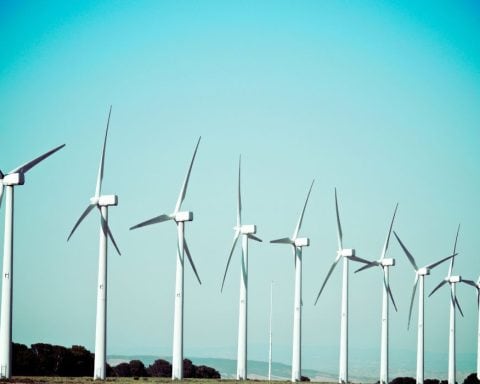The Edinburgh port of Leith has seen many historic firsts. But one of the oddest took place in Leith’s dockyards three years ago, when two 25-tonne weights were dropped from a 15-metre tower. The falling weights instantly generated 250 kilowatts of electricity, confirming the investigators’ theory that gravitational energy can be stored and generated at scale – backstopping renewable-energy grids when the skies cloud over or the winds die down.
The founders of Gravitricity, an Edinburgh start-up, hope their energy-balancing system will become standard in decommissioned coal mine shafts in Europe, South Africa and the U.S., turning depleted assets into productive ones while accelerating the transition to 100% renewable energy. Around the world, innovators are developing new energy-storage solutions that shore up growth in renewables against criticism that the sector can’t deliver power 24/7 (see Zero). According to BloombergNEF, total energy-storage capacity hit 46 gigawatts at the end of 2023. By the end of 2030, Bloomberg expects total cumulative energy-storage capacity will reach 650 gigawatts. And that total is 58% higher than Bloomberg’s year-earlier forecast.
The range of solutions being explored today is mind-bending. Beyond more efficient battery technologies such as sodium ion, aluminum air and solid-state batteries, researchers are working on mechanical systems such as pumped hydroelectric storage, compressed-air energy storage, and falling weights/flywheel storage (such as Gravitricity’s model) and chemical systems such as hydrogen storage and superconducting magnetic energy storage. Also promising: thermal systems that store heat energy, such as latent heat storage, which converts heat into reversible chemical bonds.
The revolution has already begun, led by storage projects that use conventional lithium-ion battery packs. By the end of 2023, Enfinite Corp., a privately owned Calgary energy-storage firm, was scheduled to switch on its 60-megawatt-hour (MWh) battery plant near Grande Prairie, Alberta. Powered by Tesla-made batteries, the plant will boost the firm’s energy-storage capacity by 50%, to 180 MWh. Meanwhile, Toronto-based energy independent Northland Power has just begun building “Jurassic Solar,” a 220-MW solar generating plant in eastern Alberta that will include 160 MWh of battery storage. Also on Northland’s plate is the Oneida Energy Storage Project in Ontario, a utility-scale project being built with the Six Nations of the Grand River First Nation that will be the largest energy-storage project in Canada to date.
South of the border, the world’s biggest lithium-ion energy-storage system got even bigger in 2023, with Vistra Corp.’s Moss Landing facility in California now delivering three gigawatts of capacity. “As we navigate this energy transition to cleaner fuel sources,” Vistra president and CEO Jim Burke said in a press release, “the ability to balance that shift with both reliability and affordability is paramount.”





